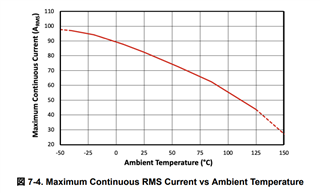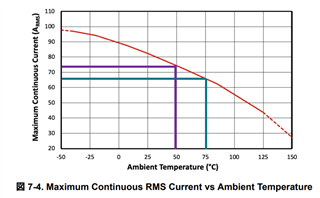Tool/software:
Hello experts,
I got a few questions from a customer regarding TMCS1123 maximum current.
1.The Ambient Temperature in Figure 7-4 excludes self-heating effect, that is, the ambient temperature is case temerature without self heating?
2. If the maximum continuous current in Figure 7-4 is exceeded, will the product fail even if the operating temperature range is not exceeded? I believe if we use a board with higher heat dissipation ability than the EVM, we can exceed the max current shown in the image.
3. In the event of a failure by exceedeing the max continuous current, what failure mode is expected?



